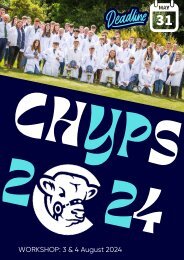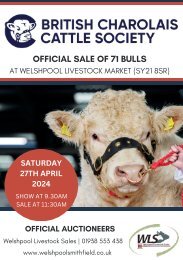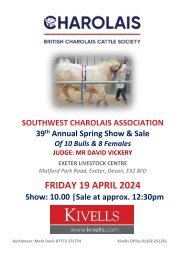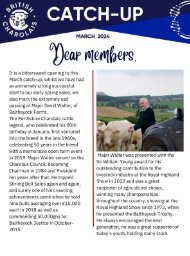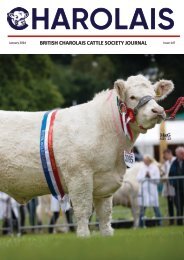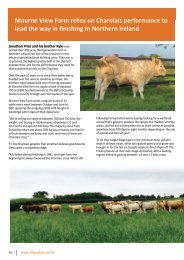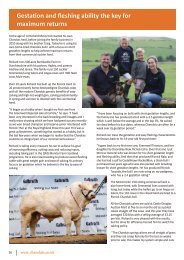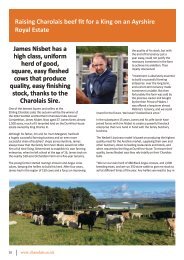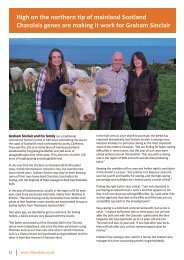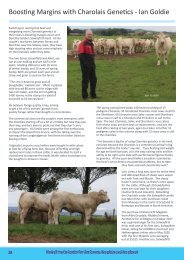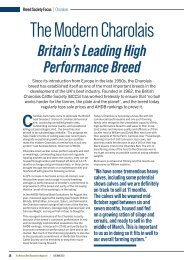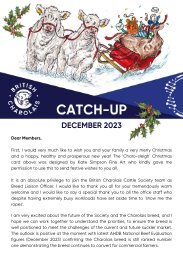January Newsletter 2023
January Newsletter 2023
January Newsletter 2023
You also want an ePaper? Increase the reach of your titles
YUMPU automatically turns print PDFs into web optimized ePapers that Google loves.
placenta where an infected dam will almost inevitably infect<br />
her unborn calf.<br />
Reproductive losses are from reabsorption, abortion, stillbirth<br />
and weak calves depending on the age of the affected foetus.<br />
Many surveys have shown that most herds have at least one<br />
positive animal and in some cases up to half the animals are<br />
affected, although this is a worst case.<br />
There are 2 main routes of infection<br />
1. Infection of the unborn calf via its dam….most<br />
common route of infection for a calf.<br />
2. Cattle eating feed contaminated with infected dog<br />
faeces.…less common route of infection but an<br />
important mechanism for the introduction into the<br />
herd.<br />
Dogs are largely unaffected by the disease, remaining well<br />
even when infected. They become infected through eating<br />
raw meat or other infected material, maybe raw food waste or<br />
cleansings from the calving yard. The infected dog may or may<br />
not be yours. Many farms are crossed by public footpaths used<br />
by dog walkers. The role of foxes is unknown and they may be<br />
involved, no one is sure. The infected dog excretes infectious<br />
oocytes for a period of time after infection until it becomes<br />
immune. It then stops shedding. It is not known how many<br />
times a dog can be infected but it is probably more than once.<br />
Control of Neospora is easier than Johnes and involves only 3<br />
main aspects:<br />
1. Identify affected cows and don’t keep their heifer<br />
calves for breeding. Previous heifer calves from<br />
affected animals are probably affected and they also<br />
should not be used to breed replacements for the<br />
herd. Affected heifers often have some reproductive<br />
problem.<br />
2. Avoid dog faeces contaminating cattle feed.<br />
3. Avoid dogs becoming infected by only feeding cooked<br />
meat and avoiding scavenging of cleansings.<br />
The good news is that cows rarely infect each other, even at<br />
calving, apart from the dam to daughter infection within the<br />
womb. A Neospora positive bull is no risk to the herd.<br />
Again CHECS offers detailed disease control options.<br />
Whilst the control of Neospora is much easier and the results<br />
seen much more quickly than for Johnes, it still remains the<br />
case that it is difficult to justify retaining a positive cow or<br />
heifer for breeding purposes if the heifer calves are intended<br />
to be kept for breeding themselves.<br />
As with Johnes disease, Neospora infected animals produce<br />
clean embryos. Again, Tyndale Vets are able to house these<br />
infected animals and produce disease free embryos to return<br />
to you to maintain and advance your herd genetics.<br />
No bull works harder for the farmer, the plate and the planet 45




